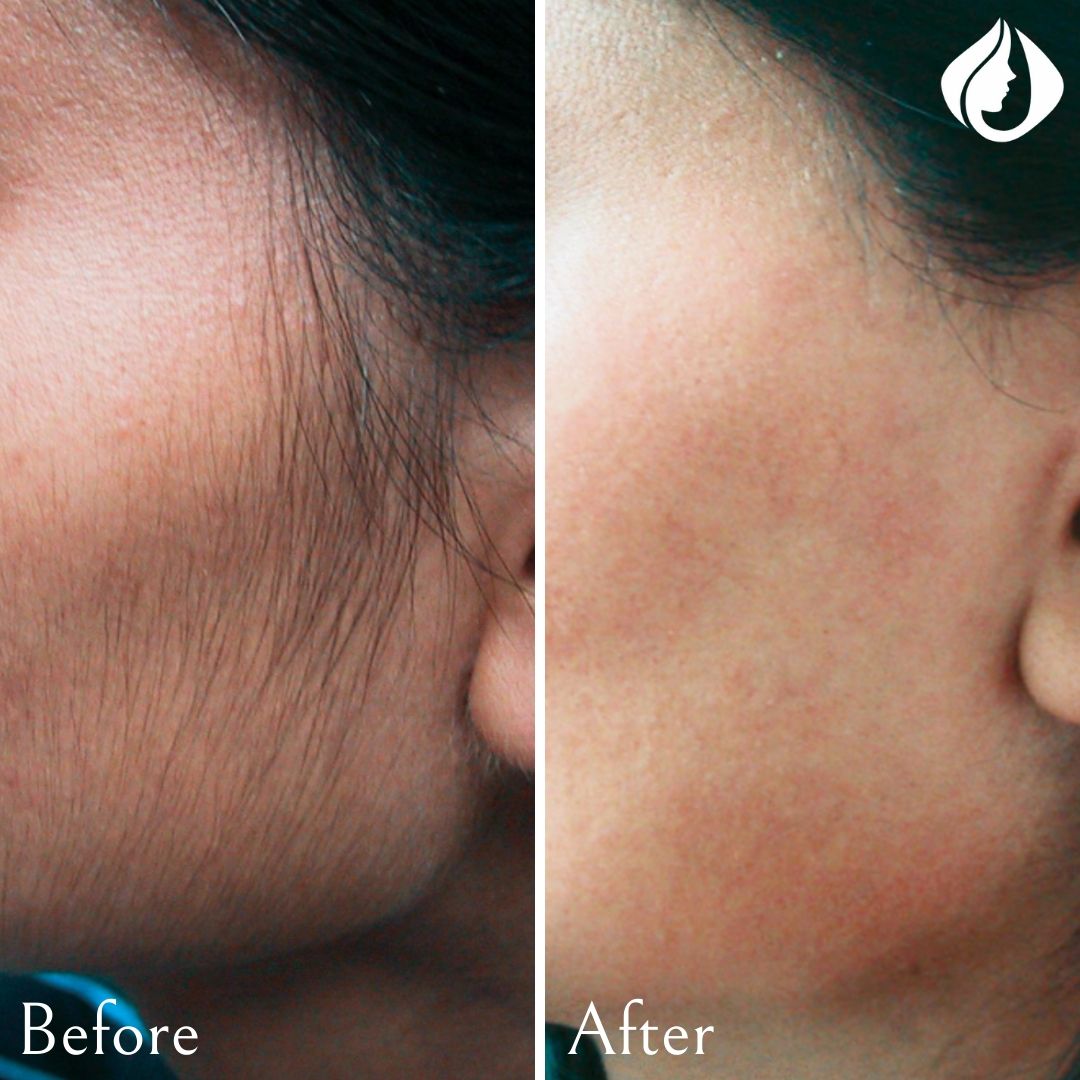10 Top At-Home Laser Hair Removal Devices of 2024, Tested by Pros
Table Of Content

Instead, they emit broad-spectrum light in multiple wavelengths that spread across a larger area of skin, meaning they’re less precise and won’t penetrate your skin as deeply. That’s why IPL devices are generally gentler and easier for people to use, which is why most at-home devices use IPL rather than laser beams. Here's a laser hair removal device that works in 15-minute sessions to reduce hair found on your underarms, legs, and bikini line.
Fastest Laser Hair Removal Device
It depends on the person, but people generally see results within 6-10 treatments. As previously mentioned, the devices available for use at home are not as powerful as the devices you would find in a dermatology office, and therefore more treatments are usually needed. IPL, laser and diode lasers can cause skin discolouration in dark skin if the wrong type of machine is used. In fact, when there is little to no contrast between the hair and the skin, your skin will absorb the light which converts to heat and causes pain, blisters and burns.
Best At-Home Laser Hair Removal Device for Multiple Body Parts

She also advises that if you have particularly sensitive skin, you may want to use the device just once a month. Either way, she notes that you should start seeing results in the form of thinning hair after your first four treatments. Plus, if the device is not held flush against your skin, it won't flash, making it safe and easy to use. It has three settings that allows you to customize the treatment to each area, too, but only one precision cap, which testers didn't love. Aral tested the speed mode on her legs and the gentle mode on her face and reported minimal discomfort. “I also find the user guide very informative and well written, which is rather a rarity in the device space,” she said.
Best At-Home Laser Hair Removal Devices Of 2024, Tested By Experts

She's a graduate of the University of Florida's School of Journalism, with a specialty in magazines and mass communication. For further analysis, we gave the devices to people in the Institute to use at home. These testers then gave notes on their device’s ease of use, performance and their overall satisfaction with it.
Everything you need to know before getting laser hair removal - Cosmopolitan UK
Everything you need to know before getting laser hair removal.
Posted: Fri, 22 Mar 2024 07:00:00 GMT [source]
FWIW, Cosmo's emerging platforms director Mia Lardiere says she can't live without this device. "After using the device consistently for three weeks, my leg hair barely grows back after a week of not shaving," she says. So while, yes, it's an investment, it's a whole lot more ~fancy~ than the others on this list—and still a fraction of what you'd spend on laser hair removal treatments in-office, FYI. It’s got three treatment modes depending on the area you’re focusing on (gentle, speed, and power mode), 10 intensity settings, and a skin sensor so the device only flashes when it’s pressed up against a safe skin tone.
LumaRx Full Body Hair Removal System
"The term laser hair removal is a bit misleading, as it really should be called laser hair reduction," notes Dr. Zeichner. "In some cases it may be difficult to fully remove hair completely." The bottom line? The Venus Pro II has six modes and six energy levels—more than the JOVS Mini we tested.
It uses a diode laser along with six different settings to treat larger surface areas and even uses a cooling technology to keep you feeling comfortable during each treatment. With its petite size and five energy settings, the Silk'n Infinity Hair Removal Device is a fantastic option for beginners and pros alike. It's FDA-cleared and safe to use on darker skin tones, too, because of its utilization of IPL. Bianca Rodriguez, Fashion & Luxury Commerce Manager at Hearst Magazines and an at-home laser hair removal expert, received her first device from her mother as—wait for it—a high school graduation present. "It wasn't your average gift, but my father gave me his Cuban hair genes, and, well—you know where this story is going. So I set off on my hair-free mission and quickly became addicted," Rodriguez tells Marie Claire. Because laser hair removal devices work by identifying each hair’s pigment in relation to your skin, the process doesn't work for everyone.
What’s the difference between laser and IPL?
Just short of $700, the Tria 4X will cost you a pretty penny—but it was the first FDA-cleared laser for at-home use, and has become a favorite among dermatologists and patients for legit, professional-level results. “I’m a fan of this device because it has high energy levels and it’s super easy to use,” says Dr. Nazarian. Bianca Kratky is a commerce writer at InStyle, with over two years of experience covering the best fashion and beauty finds.
"IPL stands for intense pulsed light," explains Dr. Rachel Nazarian, a board-certified dermatologist based in NYC. "It works similarly to laser hair removal by targeting the pigment in hair called melanin. The melanin absorbs the light or laser energy, generates heat, and heat destroys the root of hair, preventing hair growth with time." “Laser hair removal is a procedure that slows down and eventually eliminates hair growth in the area treated,” says Shereene Idriss, M.D., a cosmetic dermatologist in New York City. Basically, the laser emits a specific wavelength of light that targets pigmentation in your hair and, after a few treatments, stops your hair from growing altogether.
The number of zaps you use per treatment depends on the area you want to cover, but each section should only be pulsed once. On average, people use about 10,000 pulses per year, and they'll see results after five to eight uses. Each laser has a recommendation for how often it should be used, but on average, it's once a week at most.
Thankfully, the Elos Me Me Sleek device comes to the rescue with its unlimited treatment options and FDA clearance to work on all skin tones. We’re also partial to the ultra-sleek design, complete with a comfortable hand-held grip makes it a cinch to use on legs, arms, armpits, butt, and the bikini area. Many studies show that IPL (a.k.a. intense pulsed light) is effective for long-term hair growth reduction. Since not all lasers and treatments are appropriate for all skin tones, it’s important to talk to a trained professional about whether you are a suitable candidate. (The hair does need to have some pigment for the laser to capture.) The lasers at Milan Laser are safe and effective for all skin tones, and they are precise enough to target the hair follicle.
Dr. Sobel’s focus within dermatology is to further the total well-being and health of his patients and those who use the products he formulated and created. Laser hair removal can be tricky to do at home, and using any of these devices comes with their own set of risks. With that in mind, many come with a stamp of approval from one or more dermatologists. If you’re not willing to invest in an at-home device at this point, we recommend speaking to your dermatologist directly or paying a visit to a doctor’s office to find the best laser hair removal solution for you. Having a budget doesn't mean you have to sacrifice the quality of your hair removal sessions. At-home hair removal will save you thousands compared to professional treatments, and the NOOD The Flasher 2.0 is an economical pick that still delivers respectable results.
It’s also worth noting that, as with most laser treatments, a soothing gel is required to be used afterwards and, whether you choose Tria’s own product (£7.60, Currentbody.com) or an alternative, this is an added expense to be aware of. Sensica’s sensilight pro features a skin-tone detection feature and six energy settings, with two heads to choose from, so you’re all set whether you want to focus on your legs or your underarms. What many people don’t realise is, for IPL and laser hair removal, it’s better if your skin is smooth before your treatment – and this Braun machine comes with a Gillette Venus razor, which is a thoughtful touch. Before buying a device, check the chart to make sure the gadget will work for you. The light from IPL is absorbed by the hair’s pigment (melanin), and the heat is what damages the hair follicle.
It uses a quartz bulb and pulsed light technology to target the hair follicle, eliminating pigment in the hair shaft without damaging the delicate skin around it. It fits in the palm of your hand so you can take it with you on your next beach vacation for smooth skin all summer long. Now, I just shave once a week and follow up with this at-home device that leaves me smooth AF for a fraction of what I was spending before. Compared to every other intense pulsed light, or IPL, device I've tried, this is definitely the gentlest while still providing a damn good result.
If this information is not readily accessible, it’s best to consult your dermatologist before purchasing. At the end of the day, if you’re concerned, it’s best to consult a professional. For those aiming to maintain a professional treatment or looking for more efficient ways to do it yourself, read on for some of our top laser and IPL tools that come expert-tested, recommended, and FDA-cleared for safe and easy removal. Unlike the other at-home devices, the Tria utilizes diode technology — not IPL.
Most instruction manuals recommend using the home IPL device once every four weeks, to catch the new hair that is starting to return in its growth cycle. However, a laser focuses just one wavelength of light on your skin, while IPL releases light of many different wavelengths. Plus, the light from IPL is more scattered and less focused than a laser.
Comments
Post a Comment